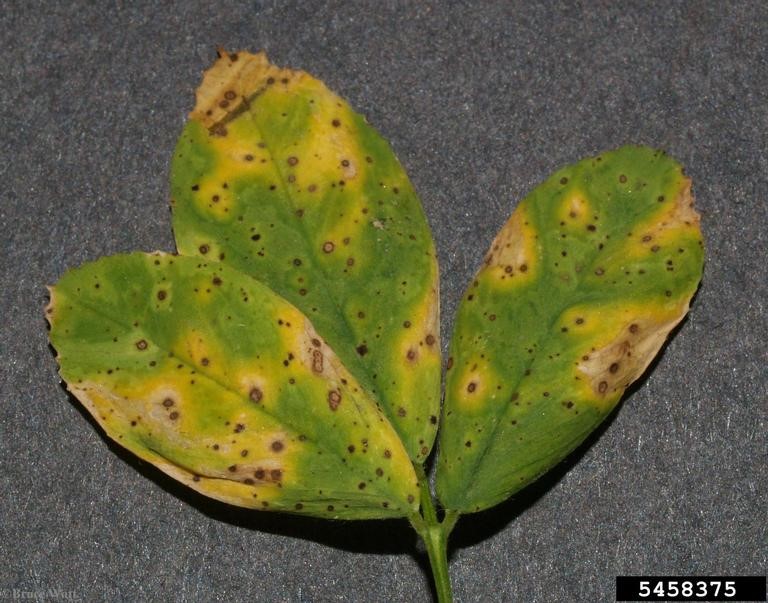We have received a number of calls about leaf spots occurring in alfalfa. Many of the common foliar diseases of alfalfa are favored by the high moisture conditions this season in Indiana. These include common leaf spot (figures 1 and 2), Stemphylium leaf spot (figure 3), Leptosphaerulina leaf spot (or Lepto leaf spot) (figure 4), and downy mildew (figure 5). All these leaf spots can lead to defoliation, and reduce vigor, hay quality, and yield.
Below is a brief overview of each of these leaf diseases and the characteristic symptoms used for diagnosis. If you have questions about these, the Purdue Plant Pest Diagnostic Lab can provide a formal confirmation to assist with future management decisions, such as variety choice.
Common leaf spot (Pseudopeziza medicaginis): Symptoms of this disease include small, circular brown to black spots that develop on the leaflets (Figure 1). Fully developed lesions may reach 1-3 mm (Figure 2) but in general do not coalesce. On the upper surface within the lesion you may be able to observe the fungal fruiting body (psuedoapotheicum) which would appear light brown, raise and as large as 1 mm in diameter. Infected leaves will eventually turn yellow and drop as the disease progresses.
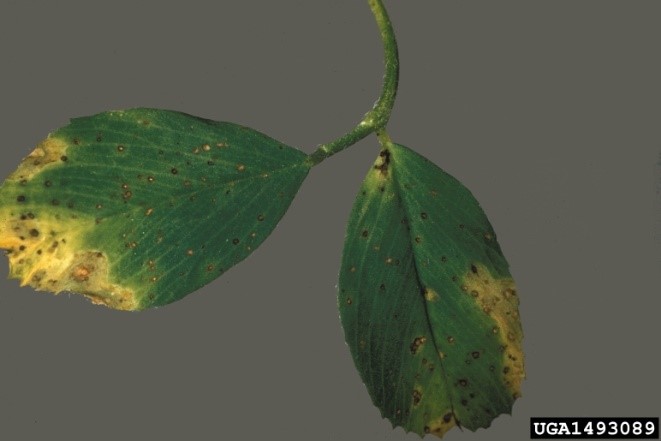
Figure 1. Common leaf spot (Pseudopeziza medicaginis). (Photo Credits: University of Georgia Plant Pathology, University of Georgia, Bugwood.org)
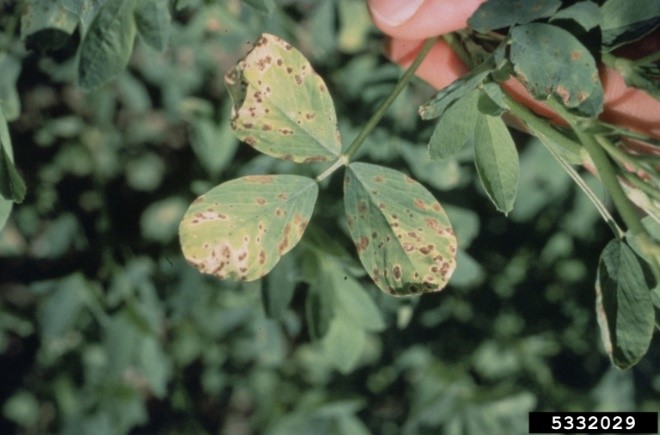
Figure 2. Common leaf spot (Pseudopeziza medicaginis). (Photo Credits: Erik Stromberg, Virginia Polytechnic Institute and State University, Bugwood.org)
Stemphylium leaf spot (Stemphylium spp.): Symptoms of Stemphylium leaf spot include oval light brown lesion with a dark brown border, which may often be surrounded by a light yellow halo. The lesions may expand and form concentric rings.
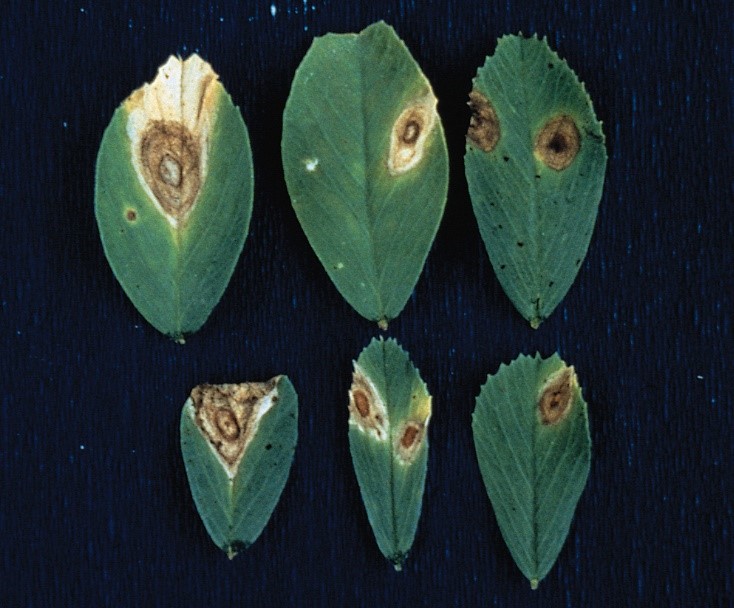
Figure 3. Stemphylium leaf spot (Stemphylium botryosum). (Photo Credit: Courtesy R. A. Kilpatrick—© APS. Reproduced, by permission, from Samac, D. A., Rhodes, L. H., and Lamp, W. O., eds. 2014. Compendium of Alfalfa Diseases and Pests, 3rd ed. American Phytopathological Society, St. Paul, MN.)
Leptosphaerulina (Lepto) Leaf Spot (Leptosphaerulina briosiana): Young leaves are most prone to Leptosphaerulina leaf spot. Symptoms will often start as small, black spots and may remain as a “pepper spots” or they may enlarge to form an “eyespot.” The larger eyespots may be oval to elliptical with light brown to tan centers and darker brown borders. A halo might also form around the lesion. Favorable environmental conditions can promote infection and disease development that can lead to loss of leaflets and possible stunting of stems. Resistance cultivars are not available, but some may show reduced leaf loss as compared to others.
Downy mildew (Peronospora trifliorum): Downy mildew infection is characterized by chlorotic tissues. A localized infection will cause chlorotic tissue on leaves or shoots. Systemic infection can cause a bunchy rosette-type growth at plant apex. White to pale purple fungal growth can occur on the lower leaf surface of the leaves. Cultivars with resistance are available.
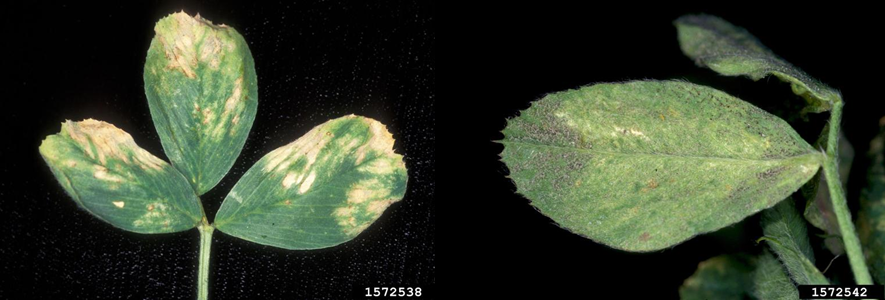
Figure 5. Downy mildew (Peronospora trifoliorum) upper chloric tissues and fungal growth on lower surface. (Photo Credits: Gerald Holmes, California Polytechnic State University at San Luis Obispo, Bugwood.org)
Management options:
Moderate and resistant varieties are available for common leaf spot and downy mildew; low to moderate for Stemphylium.
For all leaf spots, Do not delay harvest.
Harvesting the diseased tissue before leaf drop will help 1. remove inoculum from the field, 2. remove the younger, more susceptible leaves, and 3. open up the canopy to reducing the relative humidity and slow the disease cycle.
There are several fungicides labelled to use in alfalfa, but the economics of applying a fungicide may be inhibitory. See link below for a publication that describes the breakeven scenarios and probability of recovering fungicide costs by Smith, et al. 2015. Using Fungicides on Alfalfa for Dairy Production in Wisconsin. https://learningstore.uwex.edu/Assets/pdfs/A4090.pdf
Additional information:
Frate and Davis. 2008. Alfalfa Diseases and Management.
https://alfalfa.ucdavis.edu/IrrigatedAlfalfa/pdfs/UCAlfalfa8296Disease_free.pdf



